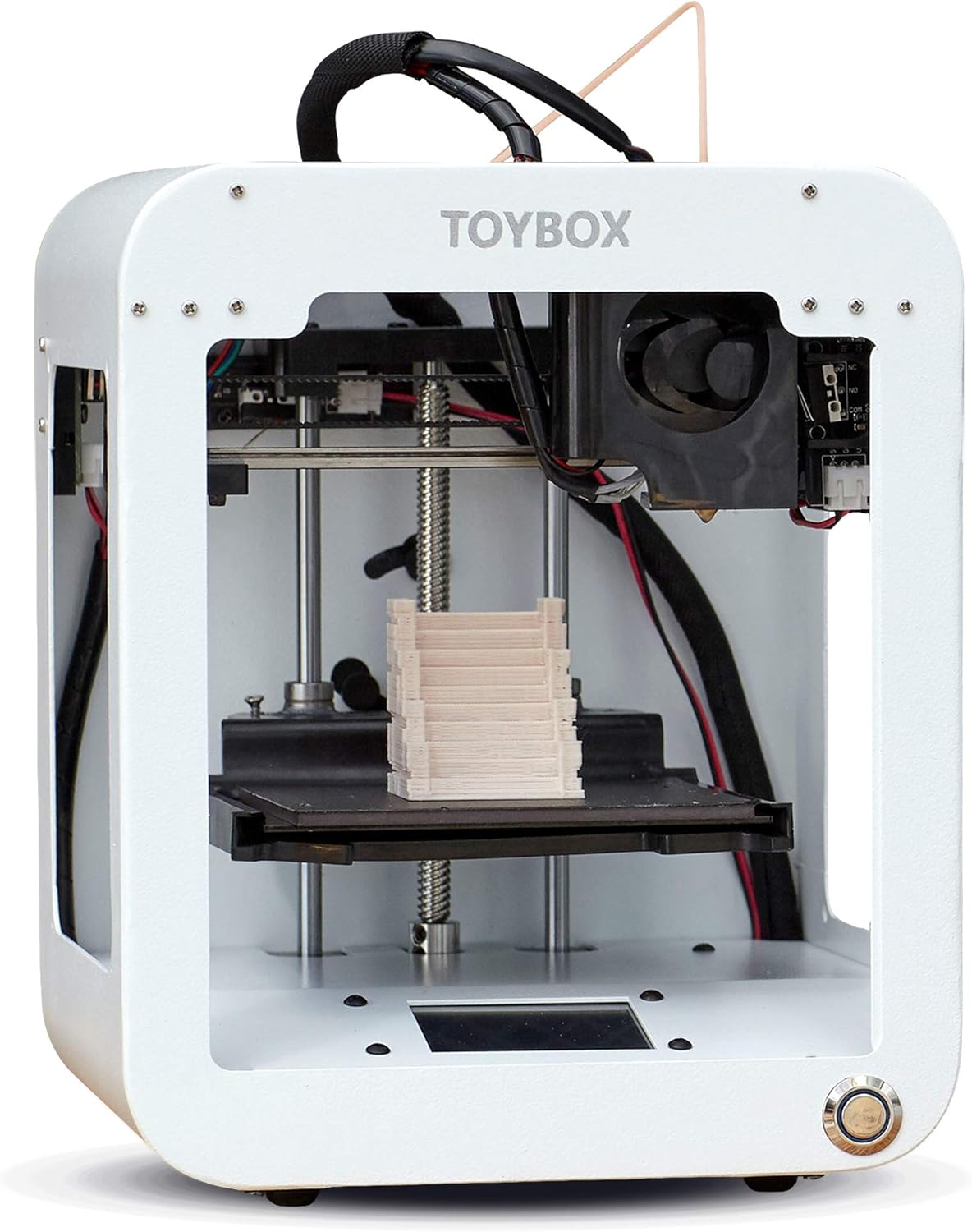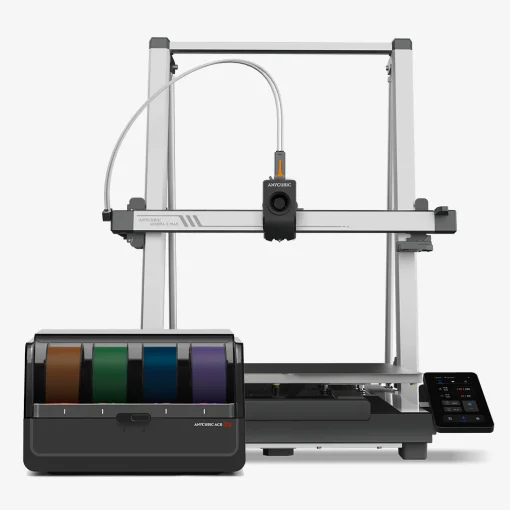Compare Toybox vs Kobra 3 Max Combo
Comparison between the best 3D printers
Choose the best 3D printer at the best price. The cheapest 3D printers are here.
Buy a 3D printer here with 3D Fila.
 |
 |
|
| Model | Toybox[BUY Toybox] |
Kobra 3 Max Combo |
| Printing Material | Filament | Filament |
| Buy Filament for Toybox Toybox | Buy Filament forAnycubic Kobra 3 Max Combo | |
| Estimated price | $299,00 | $699,00 |
| Manufacturer | Toybox | Anycubic |
| Release Year | 2024 | 2025 |
| Print Volume [mm] | 70x80x90 | 420x420x500 |
| Printer Size [mm] | 190x190x230 | 640x753x706 |
| Weight [kg] | 3 | 23,6 |
| Power Loss Recovery | NO | YES |
| Enclosed printer | NO | NO |
| Bed Leveling | Manual | Automatic |
| Filament End Sensor | NO | YES |
| Bed type | Heated | |
| Power supply system | Direct Drive | Bowden |
| Standard nozzle | 0,5 | 0,4 |
| Maximum Nozzle Temperature [°C] | 210 | 300 |
| Maximum Bed Temperature [°C] | 90 | |
| Maximum printing speed [mm/s] | 60 | 600 |
| Filament holder | YES | YES |
| Camera for supervision | NO | NO |
| Recommended filaments | PLA | PLA, PETG, TPU |
| Recommended slicers | Toybox | Anycubic Slicer, Cura, Orca Slicer |
| Maximum Resolution [mm] | 0,2 | 0,01 |
| Processor | ||
| Display | Touchscreen 2,4'' | Touchscreen 4,3'' |
| Power Supply | 800 W | |
| Connectivity | Wi-fi | USB, Wifi |
| Operating systems | iOS, Android | Windows, Mac, Linux |
| Date of registration in the system | 2024-08-06 | 2025-03-06 |
| Release date | 2024 | 2025 |
| Extra features | The Toybox 3D printer is an excellent option for children and beginners. Easy to use, with intuitive setup and simplified operation via an app. The Toybox allows you to print thousands of toys and projects through a user-friendly interface. It has a removable magnetic table that makes it easy to remove printed objects. The filament is PLA, safe for children, and the printing is reliable and error-free. It also offers custom design options, allowing you to create and print drawings and photos. | The Anycubic Kobra 3 Max Combo combines high-speed and multicolor printing with up to 8 colors. It features automatic leveling, quick filament switching, clog and entanglement detection, and AI to prevent print failures. Its 800W hotbed heats up quickly, while 10,000mm/s² acceleration ensures efficiency. App and Wi-Fi control, print recovery, and video monitoring enhance the user experience. |
| Support for multiple colors and materials (AMS and CFS) | NO | YES |
Notes * |
||
| Cost-benefit | 6 / 10 | 7 / 10 |
| Hardware | 0.8 / 10 | 5.4 / 10 |
| Tela | . | . |
| Print volume | 3 / 10 | 4 / 10 |
| Performance | 0 / 10 | 5 / 10 |
| [BUY Toybox] |
Conclusion |
| In comparing the Toybox and Anycubic Kobra 3 Max Combo 3D printers, a clear distinction emerges, particularly in terms of functionality, performance, and suitability for different user groups. The Toybox, priced more affordably, is geared towards children and beginners, emphasizing ease of use with its intuitive app and straightforward operation. It offers a limited print volume and is ideal for simple projects, primarily using PLA filament. While it shines in accessibility, it lacks advanced features like automatic bed leveling and a filament end sensor, making it less favorable for more experienced users or complex builds. On the other hand, the Anycubic Kobra 3 Max Combo, while significantly more expensive, presents a plethora of advanced features designed for serious hobbyists and professionals. It boasts a much larger print volume, automatic leveling, a versatile range of compatible materials, and proactive print failure prevention mechanisms. The combination of high printing speeds and a rapid heating bed makes it suitable for larger, more intricate projects. In summary, if you prioritize budget, ease of use, and are focused on educational or small-scale printing, the Toybox is a commendable choice. Conversely, for those seeking high performance, versatility, and advanced features to tackle more complex 3D printing tasks, the Anycubic Kobra 3 Max Combo stands as the superior option. Each printer ultimately caters to different market segments, making the decision largely dependent on the user's needs and experience level. |

